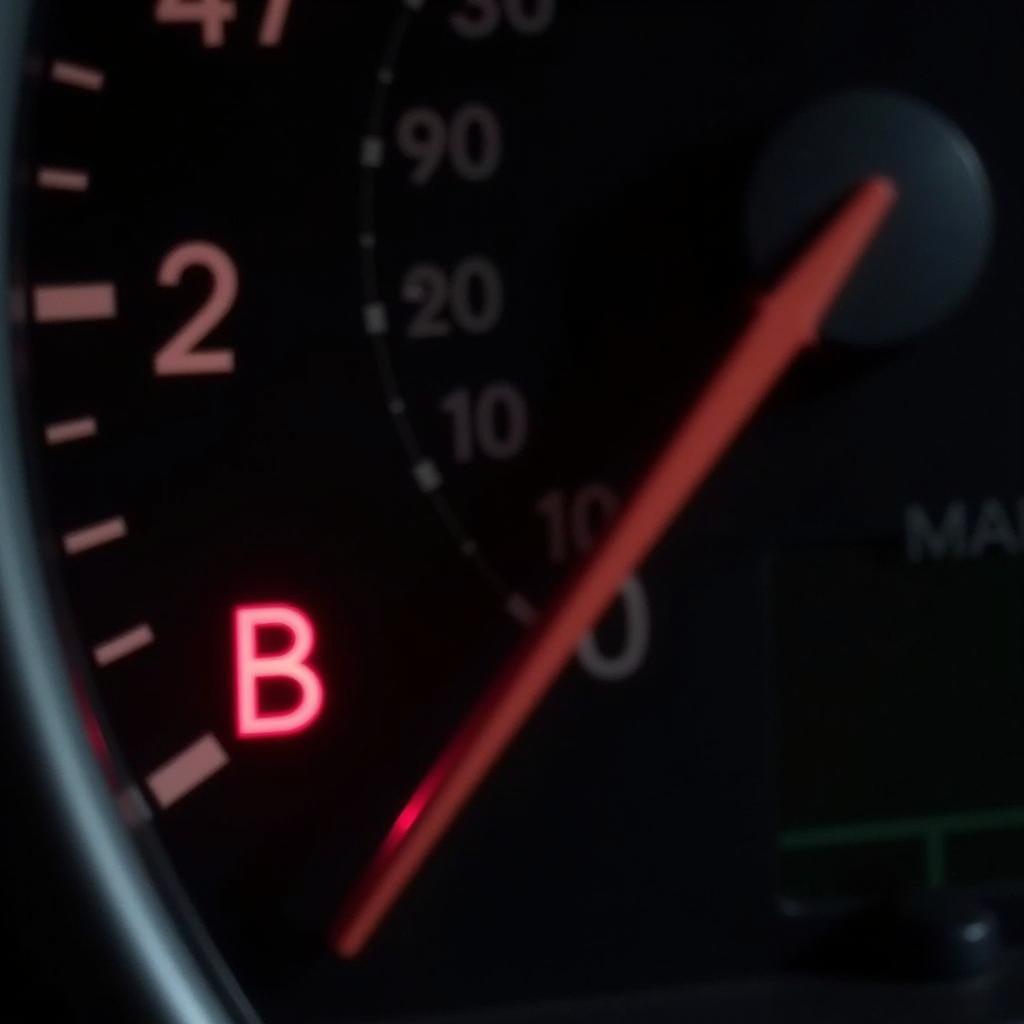Having trouble with your Ford Escape’s anti-theft system acting up? You’re not alone! This is a common issue for Ford owners, and it can be a real headache when it prevents you from starting your vehicle. Let’s break down the steps to diagnose and potentially reset your anti-theft system so you can get back on the road.
Understanding Your Ford Escape’s Anti-Theft System
Before we dive into solutions, it’s helpful to understand how the anti-theft system in your Ford Escape works. The system is designed to deter theft by preventing the engine from starting without the correct key. It does this by using a transponder chip in your key that communicates with the vehicle’s immobilizer system. When the signals don’t align, the anti-theft system can engage, preventing the engine from starting.
Common Signs of Anti-Theft System Issues
Here are some telltale signs that your Ford Escape’s anti-theft system might be the culprit:
- Rapidly Flashing Security Light: The most obvious sign is a red blinking light on your dashboard, often shaped like a car with a lock or the word “theft.”
- Engine Cranks but Doesn’t Start: If your engine turns over but refuses to fire up, the anti-theft system could be preventing ignition.
- Key Stuck in Ignition: In some cases, the anti-theft system might prevent you from removing your key from the ignition.
Tools You Might Need
Depending on the exact issue with your Ford Escape’s anti-theft system, you might need a few tools to help troubleshoot and reset it:
- Spare Key: Trying a different key can quickly determine if the problem lies with the key’s transponder chip.
- Code Reader: In some cases, a code reader (OBD-II scanner) can read diagnostic trouble codes stored in your vehicle’s computer, helping pinpoint the issue.
 Ford Escape Anti-theft Light
Ford Escape Anti-theft Light
Troubleshooting and Resetting the Anti-Theft System
Here are some steps you can try to turn off the anti-theft system on your Ford Escape:
1. Check Your Key and Ignition Cylinder
- Spare Key: Try starting the vehicle with your spare key. If it works, your primary key’s transponder chip might be faulty and needs replacing.
- Key Insertion: Ensure your key is inserted straight and all the way into the ignition cylinder. A misaligned key can disrupt communication with the immobilizer.
2. Lock and Unlock Your Ford Escape
Sometimes, a simple reset can do the trick:
- Lock all doors using your key fob.
- Wait for 30 seconds.
- Unlock your driver’s side door manually using the key.
- Attempt to start your Ford Escape.
3. Disconnect and Reconnect the Battery
Disconnecting the battery can sometimes reset the anti-theft system’s electronics:
- Safety First: Disconnect the negative (black) battery cable first, followed by the positive (red) cable.
- Wait: Let the battery sit disconnected for about 15-20 minutes.
- Reconnect: Reconnect the positive cable first, followed by the negative cable.
- Try Starting: Attempt to start your Ford Escape.
 Ford Escape Battery Disconnection
Ford Escape Battery Disconnection
4. Consult a Professional
If the issue persists after trying these steps, it’s best to consult a qualified automotive electrician or your local Ford dealership. They have the diagnostic tools and expertise to pinpoint and resolve more complex anti-theft system problems.
Frequently Asked Questions about Ford Escape Anti-theft Systems
Q: Can I disable the anti-theft system in my Ford Escape permanently?
A: While it’s technically possible to disable the system, it’s strongly discouraged. Disabling your anti-theft system makes your vehicle an easy target for theft and can void your insurance coverage in case of theft.
Q: Can aftermarket car alarms interfere with the Ford Escape’s anti-theft system?
A: Yes, sometimes aftermarket alarms can cause conflicts with the factory-installed system. If you’ve recently had an aftermarket alarm installed, consider having it checked by a professional.
Q: What diagnostic tools are recommended for troubleshooting Ford Escape anti-theft systems?
A: Cardiagtech offers a range of professional-grade diagnostic tools suitable for working with Ford vehicles, including the Escape. These tools can help you read and interpret diagnostic trouble codes, streamline your troubleshooting process, and potentially save you time and money. You can learn more about these products on the Cardiagtech website.
Q: Can a low battery in my key fob trigger the anti-theft system?
A: While a low key fob battery might prevent you from locking/unlocking your doors remotely, it usually doesn’t directly trigger the anti-theft system. The transponder chip used for ignition is separate from the key fob’s battery.
Need Further Assistance?
Are you still grappling with anti-theft issues in your Ford Escape? Cardiagtech specializes in remote diagnostics, programming, and software installations to resolve automotive problems. Connect with our team, and let our experts help get your Ford Escape back on track!



